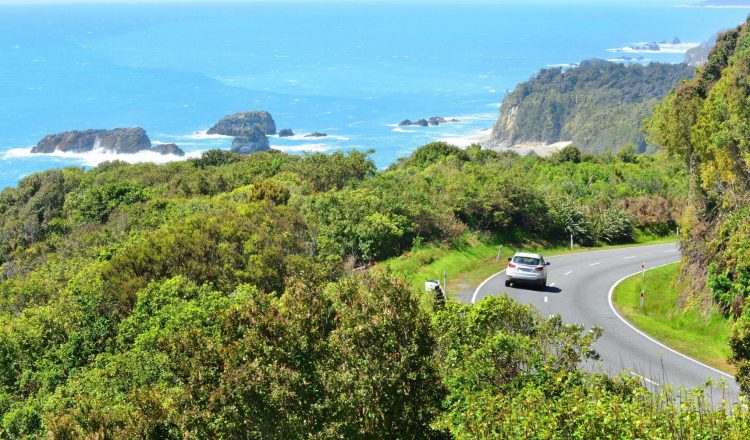隧道安全
隧道使旅行更加方便,但是由于空间有限以及出入和逃生路线更受限,隧道也带来了特殊的挑战和风险。这就是为什么驾驶者在穿过隧道时需要特别注意安全。
穿过隧道的提示
- 保持警惕。
- 留在你的车道里,避免换车道。
- 将速度保持在发布的限制范围内。
- 与前车保持安全距离。
如果你参与了隧道中的事件:
- 打开你的收音机。
- 听并遵循无线电或公共广播系统上给出的指示或标志上显示的信息。
- 如果隧道需要疏散,请立即离开车辆,然后按照指示迅速前往出口和安全地点,然后等待。
收
在新西兰的隧道中旅行时,要记住什么要点?
良好的驾驶员行为是降低隧道内发生事故风险的关键因素之一,因此新西兰运输局要求所有驾驶者在穿过新西兰任何隧道时特别小心。
在隧道中旅行时:
- 要额外注意
- 始终遵守限速并始终遵守运输机构规则-隧道的速度限制是强制执行的
- 与前车保持安全距离-至少保持 2 秒的间隙
- 在有多条车道的隧道中,避免改变车道-这可以提高隧道中每个人的安全性
- 遵循任何标牌上显示的指示,并注意速度限制的任何变化
- 尽量不要突然刹车,尤其是在交通较重的高峰时段。传播果酱
- 在隧道入口或出口合并时要格外小心,进入出口车道,有充足的空闲时间
- 适当地驾驶到天气条件,并在大风或暴雨时在离开隧道时特别小心。
如果出现以下情况,您不得在隧道中旅行:
- 你燃油不足
- 你怀疑你的车辆可能会发生故障
- 您携带的负载不安全-在开始旅程之前检查您是否已确保负荷-不安全的负载可能会受到处罚
- 由于事件或紧急情况,隧道已关闭
- 如果危险货物的过境被禁止或限制。有关危险品的进一步信息包含在以下部分
- 您的车辆或负载高度超过隧道高度间隙限制-您应该检查适用于路线的当地高度限制
- 你是行人、骑自行车者或电动踏板车(提供人行道的维多利亚山隧道除外)。
进入隧道时我该怎么办?
进入隧道时:
- 在您的电台或其他交通信息网站上收听更新或重要的交通信息
- 打开你的头灯
- 取下太阳镜(除非需要处方眼镜)
- 服从所有交通标志、交通信号和路面标记
- 避免在具有多条车道的隧道中改变车道
- 保持速度限制或交通流量,即使交通速度缓慢,也能与您前面的车辆保持安全距离。保持至少 2 秒的缺口。
如果我的车辆发生故障或我在隧道中坠毁,我该怎么办?
如果您在隧道中破解或坠毁,但无法用车辆安全地退出隧道,则应:
- 拉到一个安全的地方停在肩部区域,尽可能远离交通路线
- 打开危险指示灯,保持冷静,等待事件响应单位或警察到达。操作员将在相机上看你。通过公共广播系统收听运营商的
- 请留在车内或安全地在车前或过境通道(如果已提供)安全等候,除非发生火灾或者被告知您撤离隧道
- 如果您担心或觉得操作员没有见到你,请使用最近的紧急电话联系隧道的控制室来寻求帮助,但要小心并注意实时交通。一些隧道还会显示手机呼叫的控制号码(Waterview 呼叫 0800 隧道)。
消息
如果出现紧急情况需要疏散,请寻找跑步人员标志和闪烁的灯以定位安全出口点,遵循标志,并遵循在广播的任何公共广播和广播中发出的指示。您的安全出口可能直接出入隧道入口或出口。
如果我在隧道中旅行时遇到交通困境,我该怎么办?
如果您在隧道中旅行时遇到交通困境,请遵循以下提示:
- 查找头顶标志上显示的说明
- 在您的无线电上收听更新或重要的交通信息-运营商可以通过隧道中的无线电或通过 PA 广播特定的消息
- 闭窗户,然后打开空调以重新循环空气。如果您等待更长时间,请关闭引擎并等待交通再次移动。这可以减少隧道中的烟雾量。
- 如果您需要紧急帮助,请拉到肩膀上并使用最近的紧急电话联系隧道的控制室(在您下车时小心观察交通情况),或者如果提供了本地联系电话,请拨打控制室帮助热线。
关
如果我在旅行的隧道里有火灾,我该怎么办?
隧道中的火灾非常危险,因为潜在的烟雾对其他交通乘客造成影响。
如果发生火灾,您可能需要立即离开车辆,然后按照出口路线的说明步行离开。你面临的直接风险是火中的烟雾。
运输局监测隧道并管理任何火灾或其他事件。如果你在隧道中看到前面的烟雾或火灾,操作员将使用火灾报警器和公共广播系统、无线电转播系统和电子留言板等系统关闭隧道并撤离隧道。
如果隧道正在撤离,那么:
- 如果你的路线清晰,立即开车出隧道远离事件,不要停下来协助
- 如果你的路线不清晰,关闭发动机但将钥匙留在车内
- 通过最近签署的路线离开隧道,也可能是隧道入口或出口
- 过公共广播系统聆听其他说明。在安全的地方等待,等待紧急服务部门的进一步指导。
通
如果你的车起火:
- 拉到道路的左侧然后停车
- 关闭发动机,下车然后小心通过交通
- 立即呼叫帮助。立即拨打 111 或者拨打最近的紧急电话并致电运营商。不要把自己置于危险
- 操作员现在将在摄像机上了解该事件,并可以通过公共广播系统与您沟通。他们可能会撤出隧道,然后使用雨水系统来扑灭火灾
- 按照给出的任何说明进行操作,离开车辆前往安全地方。
之中
为什么在某些隧道中使用高速摄像机?
高速摄像机由新西兰警察操作。
高速摄像机安装或使用在有碰撞历史或潜在与速度相关的坠毁风险的道路上。隧道的性质使得穿过隧道的超速风险更高。隧道中的高速摄像机鼓励您在速度限制内行驶,从而降低崩溃的风险。
隧道中最常见的危险是车辆故障或碰撞,这可能会导致严重伤害,然后也可能引起火灾。如果其中一种危险意外出现,加速会缩短反应时间。
就人类生命、拥堵和延迟、污染和维修成本而言,隧道坠毁可能会造成极其昂贵的代价。隧道的封闭环境也使紧急服务的救援工作变得复杂化。
隧道中危险品和超尺寸车辆的犯罪
在 Waterview 和惠灵顿所有隧道,禁止运输危险品。
在 Lytletton 隧道和荷马隧道,危险品的过境只能在特定时间通过许可证进行控制。
如果您通过维多利亚公园或约翰斯通山隧道携带大量危险品,通常这要求您在露天道路上按照《道路运输规则》展示标牌。在有标语牌装载禁标志的隧道内携带带有标牌的危险货物是犯罪行为。

















































